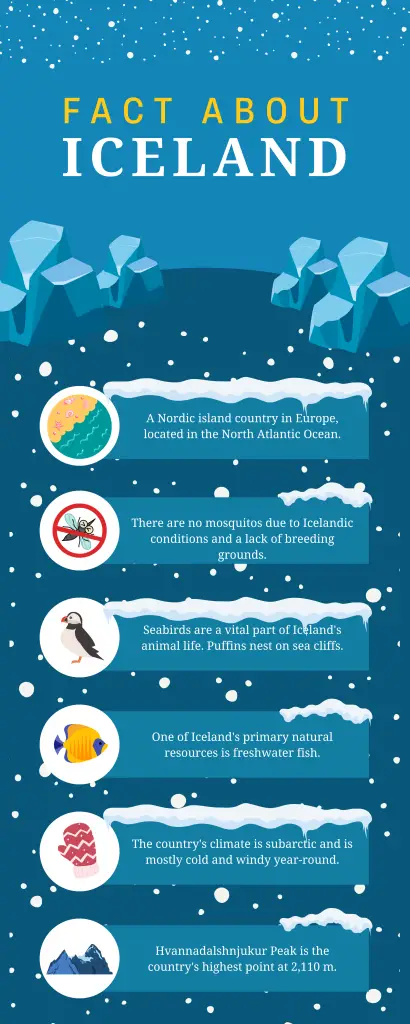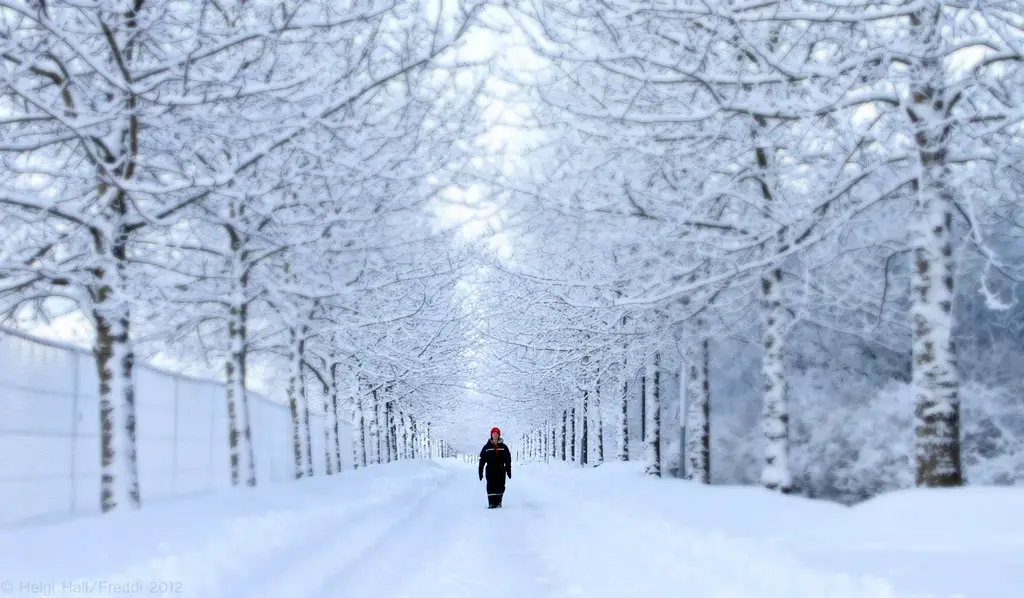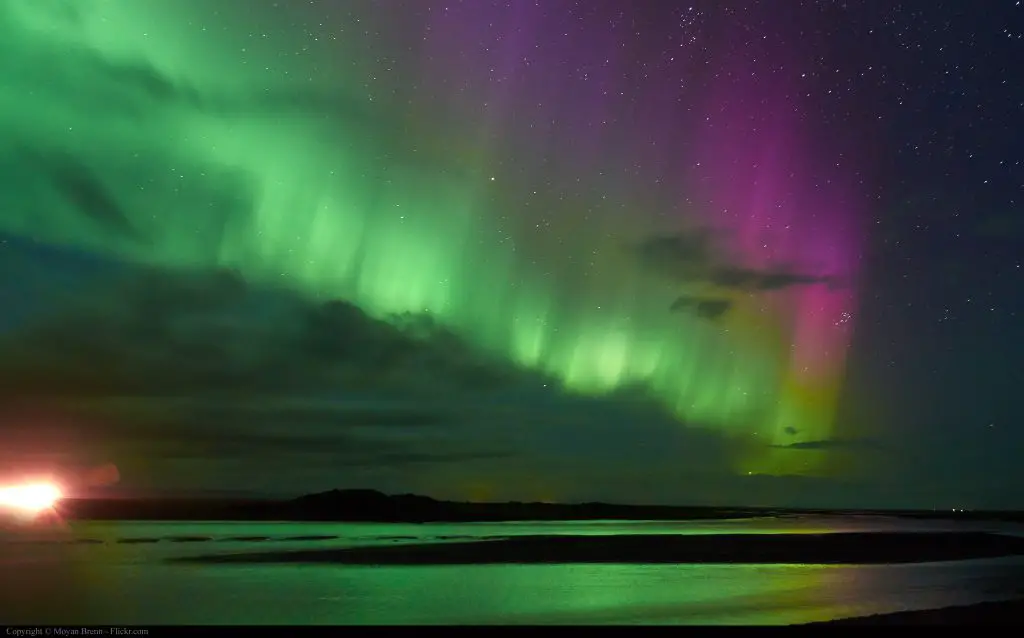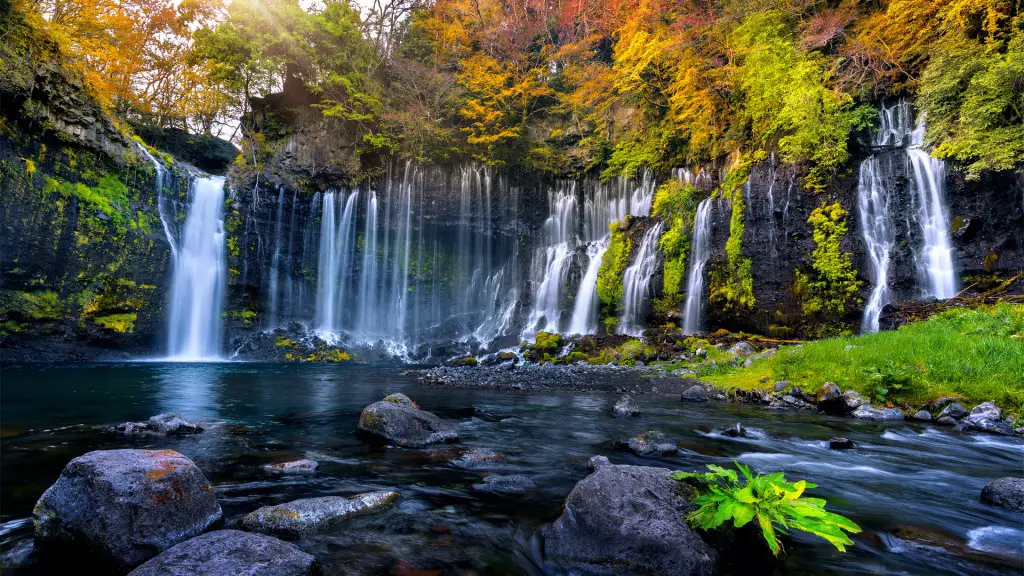
The “land of fire and ice,” Iceland, is a popular tourist destination due to its striking natural beauty, distinctive culture, and exciting outdoor experiences. However, it is essential to prepare ahead since the weather and the seasons in Iceland may have a significant impact on your vacation. The winter months, with their shorter days and more frequent storms, are particularly trying for tourists.
Although stunning at any time of year, Iceland’s erratic weather and crowds of tourists can make some times of year less than ideal. This article can help you avoid the worst times to visit Iceland if you are planning a vacation there.
Editor’s Pick: Top 10 Iceland Waterfalls | Updated 2023 Guide

Worst Time to Visit Iceland
The months of December through February, in particular, are not recommended for a trip to Iceland. During this time of year in Iceland, the weather is very unpredictable and severe. It is common for there to be significant snowfall (6.7 inches on average), for roads to become icy, and for visibility to be reduced owing to thick fog or snowstorms. Even for seasoned drivers, these weather patterns can create hazardous road conditions.

Approximately four to five hours of daylight will be available to you during this time. Because of this, tourists will have less time to take in the area’s stunning scenery and world-famous landmarks. There is a risk of feeling hurried or missing out on stunning scenery due to the short duration of daylight.
| Snowfall in Iceland | |
| Month | Snowfall (Inches) |
| January | 9.9 |
| February | 9 |
| March | 7 |
| April | 2.1 |
| May | 0.1 |
| June | 0 |
| July | 0 |
| August | 0 |
| September | 0 |
| October | 0.5 |
| November | 3.1 |
| December | 8.2 |
Other Difficulties: Iceland’s Worst Season
During winters, extreme temperature swings (from -19 degrees centigrade to 3.3 degrees centigrade) are typical; although the coast tends to be warmer than the interior, the highlands, particularly, can see temperatures far below zero. Here are some things to consider if you plan a winter trip to Iceland.
Limited Daylight Hours
Winters in Iceland are known for their short days due to the long, dark winter nights. In December, the sun is a rare visitor, appearing for as few as 4 hours. It is like that chic acquaintance who never stays for the whole party before leaving.

Daylight hours are short in this realm of fire and ice, which can limit your opportunities for sightseeing and photography. However, if you like gloomy atmospheres, winter is for you.
Related: Worst Time to Visit Rome, Italy – Avoid These Months!
Stormy Weather
Stormy weather is another hallmark of Iceland’s winter season, raising safety concerns and making travel arrangements difficult for tourists. On December 10, 2019, thousands of people in Iceland lost electricity as a result of hurricane-force winds. The southeast of the nation had the highest wind speeds. Sustained winds of 130 miles per hour were recorded on a mountain at an altitude of 2,500 feet. Roads close, flights are canceled, and driving conditions are difficult as a consequence of the country’s high winds and heavy rains. Wind and snow can combine to cause whiteout conditions, making it impossible to see or move. Let us say you are thinking of a trip to Iceland this winter.

In such a scenario, it is essential to be prepared for the worst-case scenario by monitoring weather updates, adhering to road and trail closures, and stocking up on emergency supplies.
Stormy weather in Iceland could cause travel delays, so it is best to be ready for everything. Be prepared for the possibility of having your plans altered by inclement weather or hazardous road conditions by keeping tabs on both.
Road Closure
The unpredictable nature of Iceland’s climate often leads to unpleasant outcomes. It seems like you are just cruising down Route 1 when suddenly, POW! Putting up roadblocks.

Some of the country’s most breathtaking sights are inaccessible during the winter because many roads, including the well-traveled highland routes, are blocked. Like an unexpected visit from the in-laws, hazardous road conditions and abrupt closures can damper an otherwise spectacular trip.
Hard to See the Northern Lights
Visitors from all over the globe go to Iceland in the hopes of catching a glimpse of the Northern Lights, also known as the Aurora Borealis. The short days of winter and the vagaries of the weather make it more difficult to see them. Since the Northern Lights are best seen in total darkness, the viewing window during Iceland’s winter months is often rather small. Further complicating attempts to see the Northern Lights is the fact that the sky is typically gloomy, overcast, or stormy throughout the winter.

Northern Lights viewing in Iceland during the winter months is still doable with little preparation and luck. Nighttime, namely between 10 p.m. and 2 a.m., and cloudless evenings are ideal for seeing the Northern Lights. An area with no artificial light and a clear view of the northern horizon should be selected. The odds of witnessing the Northern Lights are affected by weather, so it is crucial to make preparations in advance if this is a goal of your vacation.
Accessibility to Some Tourists Attractions
Gullfoss waterfall, one of the highlights of the Golden Circle trek, is partly frozen over in the winter. While this can provide a novel perspective, it could diminish the overall experience and make certain trails impassable if it snows or freezes.

If you want to drive the Golden Circle in Iceland, you should probably avoid doing it between November and February. This will let you have a more pleasant and worry-free experience seeing the amazing sites that this nation has to offer.
Be Prepared
When visiting Iceland in the winter, it is best to have a well-thought-out strategy in place that allows you to focus on the experiences and sites that are most important to you. If possible, schedule outside excursions for the light of day and inside pursuits for dusk and dawn. If you want to go trekking or exploring at night, be sure to bring along enough illumination, warm and waterproof gear, and sturdy boots. Last but not least, be ready to modify your plans on a dime because of the unpredictable Icelandic weather.
Other Less Favorable Times to Go to Iceland
There are seasons other than winter that are not ideal for visiting Iceland.
Early Autumn
The weather in Iceland is unpredictable, even in the autumn months, which are often thought to be the better time to visit. Beginning in September, low-pressure systems (known as “haustlaegd” in Icelandic, which means “autumn depression”) start moving over the nation. Powerful winds and often torrential downpours accompany these systems. Rain and chill are likely, particularly later in the day and overnight. Depending on the weather, outdoor activities like trekking and sightseeing are canceled or severely hampered. Always anticipate changing weather conditions and bring layers of clothes accordingly.

Keep in mind, however, that certain attractions are only open at certain times of the year. You could, for instance, be unable to participate in ice cave excursions, a common winter pastime, since caverns at this time of year are sometimes unsafe. Because they often do not open until late June or even July, several roads and hiking routes in the highlands can stay closed or be less accessible.
Most Crowded and Expensive Months to Visit Iceland
The popular tourist spots in Iceland, including the Golden Circle and the south shore, can become congested during high season when more than two million people go to the country each year. Summer (June, July, and August) is the peak season because of the pleasant temperatures and extended daylight hours. Since June and July have such short nights in comparison to the rest of the year, it is no surprise that many people choose to take advantage of their summer vacation to go to Iceland.

The months of June through August are the priciest times to visit Iceland. If you stay in a double room, a short trip to Iceland will cost you around $4300.
When is the Worst Time to Visit Iceland: According to Other Tourists?
Sara Anwar visited Iceland in Winter last year. According to her, ”It’s like going to the middle of nowhere when you visit Iceland in the winter. Temperatures drop into the negatives and single digits at night. The whole vacation is often spent inside.”
Umar Ali also shared his experience and said, “The time of year we chose to visit Iceland is one I really regret. When it comes to weather, Iceland is at its worst during the months of December and February. The days are too short and it’s too cold during Iceland’s winters. Because of the bad weather, many of the places we wanted to see were closed”.
Read our guides
Month-by-Month Analysis: Visiting Iceland
Follow this guide to uncover the best month for your visit to Iceland, depending upon the activities you want.
January
- Temperature: Average highs around 1°C (33°F) and lows around -4°C (24°F).
- Weather: Cold and dark with limited daylight. Snowfall is common.
- Activities: Ideal for winter sports such as skiing and snowmobiling. Also a great time for witnessing the Northern Lights.
- Special Events: New Year’s Eve celebrations are famous in Reykjavik with fireworks and bonfires.
- Crowds: Relatively low tourist numbers compared to the summer months.
February
- Temperature: Similar to January, with highs around 1°C (33°F) and lows around -4°C (24°F).
- Weather: Cold and snowy, with limited daylight.
- Activities: Continue winter sports and Northern Lights viewing. Ice cave tours are popular.
- Special Events: No major events, but Valentine’s Day can be celebrated in unique ice hotels.
- Crowds: Still relatively low, but slightly more visitors compared to January.
March
- Temperature: Slowly warming up, with highs around 3°C (37°F) and lows around -3°C (27°F).
- Weather: More daylight, but it’s still chilly. Snow begins to melt.
- Activities: Ice cave tours are still possible. It’s a transition month for winter and spring activities.
- Special Events: No major events, but it’s a good time for birdwatching as migratory birds start to return.
- Crowds: Crowds remain low compared to the summer season.
April
- Temperature: Getting milder, with highs around 5°C (41°F) and lows around -1°C (30°F).
- Weather: Snow continues to melt, and you’ll start to see more greenery. Rain showers are common.
- Activities: Hiking, exploring waterfalls, and visiting geothermal pools are popular.
- Special Events: Easter celebrations are significant, with various traditions.
- Crowds: Still relatively low, but more tourists compared to the winter months.
May
- Temperature: Spring is in full swing, with highs around 9°C (48°F) and lows around 3°C (37°F).
- Weather: More daylight, less chance of snow, but occasional rain showers.
- Activities: Great time for hiking, horseback riding, and exploring the Golden Circle.
- Special Events: Labor Day on May 1st is celebrated with parades and events.
- Crowds: Tourist numbers start to pick up, but it’s not as crowded as the peak summer season.
June
- Temperature: Pleasantly mild, with highs around 11°C (52°F) and lows around 6°C (43°F).
- Weather: Long daylight hours, occasional rain, and wildflowers in bloom.
- Activities: Ideal for exploring Iceland’s stunning landscapes, including glaciers and fjords.
- Special Events: Midnight Sun celebrations around June 21st.
- Crowds: The start of the high tourist season, so expect more visitors.
July
- Temperature: Summer is at its peak, with highs around 13°C (55°F) and lows around 8°C (46°F).
- Weather: Mild and relatively dry, with almost 24 hours of daylight.
- Activities: Perfect for hiking, camping, and whale watching. Puffin colonies are active.
- Special Events: Independence Day on June 17th is celebrated with parades and festivities.
- Crowds: Peak tourist season, with the highest number of visitors.
August
- Temperature: Similar to July, with highs around 13°C (55°F) and lows around 8°C (46°F).
- Weather: Still mild and relatively dry, with daylight hours slowly decreasing.
- Activities: Continue summer activities. Good time for fishing and camping.
- Special Events: Reykjavik Culture Night in mid-August with music and art events.
- Crowds: Still very busy, as August is a popular month for tourists.
September
- Temperature: Fall begins, with highs around 10°C (50°F) and lows around 6°C (43°F).
- Weather: Start of the rainy season, but the fall foliage is beautiful.
- Activities: Great for hiking and exploring the Highlands. Still possible to see the Northern Lights.
- Special Events: Reykjavik International Film Festival usually takes place in late September.
- Crowds: Tourist numbers start to decline, making it a quieter time to visit.
October
- Temperature: Cooling down, with highs around 7°C (45°F) and lows around 3°C (37°F).
- Weather: Autumn is in full swing with colorful landscapes, but it can be quite rainy and windy.
- Activities: Ideal for hiking to enjoy the fall foliage. Geothermal pools are inviting during this season.
- Special Events: No major events, but the Reykjavik International Literary Festival might take place.
- Crowds: Tourist numbers are lower compared to the summer months, providing a quieter experience.
November
- Temperature: Getting colder, with highs around 3°C (37°F) and lows around -1°C (30°F).
- Weather: Late autumn with shorter daylight hours and occasional snowfall.
- Activities: Early signs of the Northern Lights season. Great for cozying up in local cafes and exploring museums.
- Special Events: No significant events, making it a peaceful time for tourists.
- Crowds: Low, making it an excellent time for solitude and Northern Lights viewing.
December
- Temperature: Winter has arrived, with highs around 2°C (36°F) and lows around -2°C (28°F).
- Weather: Cold, with limited daylight hours. Snowfall is common.
- Activities: Winter sports like ice skating and snowmobiling. Christmas markets and festivities in Reykjavik.
- Special Events: Christmas and New Year’s Eve celebrations with fireworks.
- Crowds: Moderate around Christmas and New Year’s, otherwise relatively low.

Conclusion
The worst time to visit Iceland is the period of extreme winters between December and February. However, keep in mind that while Iceland offers unique experiences throughout the year, the winter months (November to February) are the best for seeing the Northern Lights due to the long nights and clear skies. However, the weather can be challenging, so be prepared for cold conditions and limited daylight.
For those who prefer milder weather and extended daylight, the summer months (June to August) are the most popular, but they also bring larger crowds and higher prices for accommodations and activities. Plan your visit according to your interests and what kind of experience you’re looking for in Iceland.





